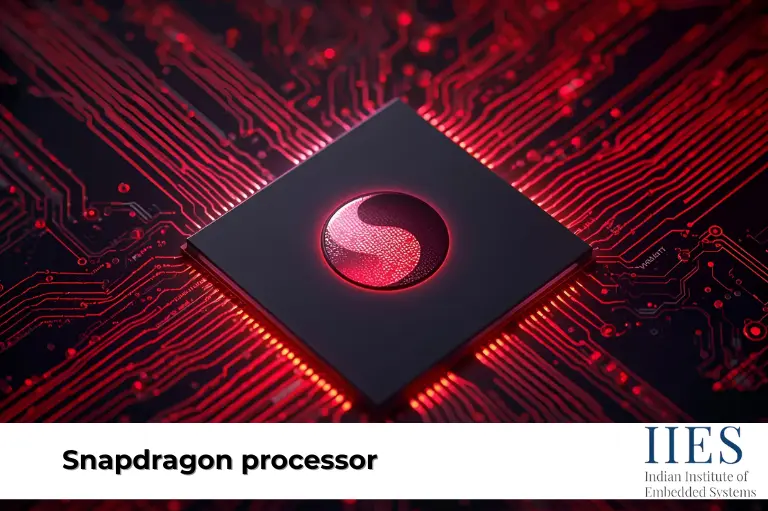
Qualcomm’s Snapdragon processor power millions of smartphones, tablets, and laptops worldwide. But many still ask: is Snapdragon itself an ARM processor? To answer this, we need to explore ARM architecture, Snapdragon’s design, and how Qualcomm customizes its chips for modern devices.
Yes, Snapdragon processors are based on ARM architecture, but they’re not just CPUs. Snapdragon is a full system-on-chip (SoC) that combines ARM-based cores with Qualcomm’s custom GPUs, DSPs, and modems for powerful, efficient performance.This makes it one of the best Snapdragon processor solutions for today’s devices.
ARM (Advanced RISC Machines) develops processor designs but doesn’t manufacture chips. Instead, it licenses its architecture to companies like Qualcomm, Apple, and Samsung. ARM-based processors are famous for being power-efficient, lightweight, and perfect for mobile and embedded systems.
The secret lies in RISC (Reduced Instruction Set Computing). Unlike complex processors, RISC uses a simplified instruction set, which reduces power consumption while delivering reliable performance—ideal for smartphones, IoT devices, and wearables.
Snapdragon is not just a CPU—it’s a system-on-chip (SoC) designed by Qualcomm. An SoC integrates multiple components into one chip, making devices smaller, faster, and more efficient.
Inside every Snapdragon SoC, you’ll find:
While ARM provides the foundation, Qualcomm adds custom technologies that make Snapdragon unique. This mix of ARM architecture and Qualcomm’s own innovations is why Snapdragon chips stand out in the Android ecosystem. Many users explore Snapdragon processor comparison when choosing devices because of these differences.
Every Snapdragon chip uses ARM technology at its heart. Qualcomm follows two approaches:
Some Snapdragon chips use stock ARM Cortex cores (like Cortex-A53, Cortex-A55, or Cortex-X1). These cores are optimized for balanced performance and energy efficiency.
Qualcomm also builds Kryo cores, custom-designed processors based on ARM’s instruction set. These are tuned for specific needs like higher performance, better power management, and deeper integration with other Snapdragon components.
This flexibility allows Qualcomm to design processors suited for budget, mid-range, and flagship devices, forming the basis of the Snapdragon processor series.
Snapdragon’s strength comes from its additional components like the Adreno GPU and Hexagon DSP. These custom parts boost graphics, AI, and audio performance, making Snapdragon stand out from other ARM-based chips.
Together, these components highlight key Snapdragon processor features that strengthen its performance edge.
Modern smartphones need AI for tasks like face unlock, real-time translation, and photo enhancement. Snapdragon’s Qualcomm AI Engine combines:
By distributing AI tasks across different parts of the chip, Snapdragon achieves high performance without draining the battery—perfect for edge AI in IoT and mobile devices.
One area where Snapdragon leads is modem technology. Qualcomm is a pioneer in wireless communication, and its SoCs often debut the latest version of Snapdragon processor connectivity standards.
This integration makes Snapdragon chips ideal for smartphones, tablets, and even laptops that require fast, reliable internet on the go.
While Apple, Samsung, and MediaTek also use ARM designs, Snapdragon balances performance, graphics, AI, and connectivity better. This all-in-one optimization makes it highly preferred by Android smartphone manufacturers.
Snapdragon stands out because of its balanced integration—custom Kryo cores, Adreno GPU, Hexagon DSP, and advanced modems. This is why tech enthusiasts often check Qualcomm Snapdragon processor list when comparing devices.

Snapdragon is built on ARM architecture but goes far beyond it. Powered by Kryo CPUs, Adreno GPUs, Hexagon DSPs, and advanced modems, Snapdragon chips are full SoCs delivering performance, efficiency, and connectivity. This powerful mix has made Snapdragon the backbone of the Android ecosystem and a great example of Snapdragon architecture explained in real-world devices.
A Snapdragon processor is a mobile system-on-chip (SoC) designed and manufactured by Qualcomm.
Yes, Snapdragon processors are based on ARM architecture but enhanced with Qualcomm’s custom technologies.
Qualcomm designs custom Kryo cores, integrates Adreno GPUs, Hexagon DSPs, and advanced modems to optimize performance, AI, and connectivity.
Snapdragon chips stand out because of their balanced mix of performance, efficiency, advanced connectivity, and unique features like Adreno GPU and Hexagon DSP.
Yes, Snapdragon processors are optimized for AI with the Qualcomm AI Engine, distributing workloads across CPU, GPU, and DSP for efficiency.
They include ARM-based Kryo CPU cores, Adreno GPU, Hexagon DSP, and integrated 4G/5G modems.
Indian Institute of Embedded Systems – IIES